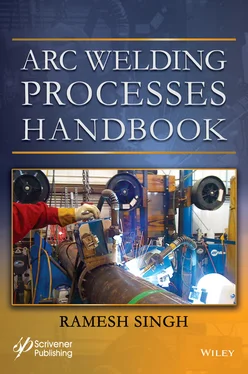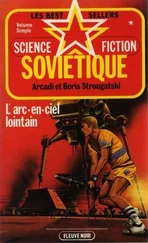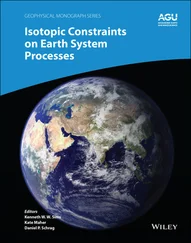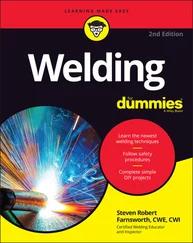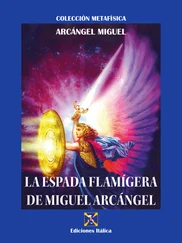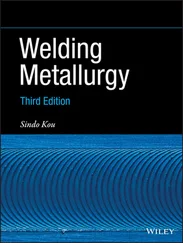1.6.5 Submerged Arc Welding (SAW)
Earlier attempt to increase welding production lead the development of Automatic welding utilizing bare electrode wires in the early nineteenth century, but was not much popular primarily due to the open arc and the resultant quality of weld, which was always an issue.
The dissatisfaction with bare-wire welding and some innovative ideas lead to the development of the submerged arc welding (SAW) process, this was much better automated process and it made the automatic welding popular. Submerged arc welding is defined as “an arc welding process which produces coalescence of metals by heating them with an arc or arcs between a bare metal electrode or electrodes and the work piece. Pressure is not used and filler metal is obtained from the electrode and sometimes from a supplementary welding rod.” It is normally limited to the flat or horizontal position.
1.7 Efficiency of Energy Use
Processes use electrical energy to initiate arc, but not all the arc energy is fully used to melt the metals being welded. There is significant energy loss in the process.
The process efficiency of various arc welding process differs significantly, based on number of factors like material being welded, type of gas being used if gas is used in the process. The effect of these variables depends on one or a combination of more factors.
The use of energy generated by a process is an important factor in determining how much current is needed to generate required heat for welding. The generation of heat also determines the effective use of a process for welding different materials. The table below gives the glimpses of Arc efficiency of various Arc Welding processes.
As is obvious, not all welding and joining process are equal, this leads to the fact that some are more versatile in usability for welding number of materials, while some are more specific to certain type of materials. The table below gives a general usability of various arc welding processes.
For example, GTAW process is nearly all the material listed, but SMAW and SAW processes stops short, and not suitable for welding Copper and alloys, or Titanium and its alloys. Table 1.2is the generic information, while the Table 1.3is more specific with numbers and includes more process and varients. Similarly Brazing is possible for nearly all material listed but soldering is not. The Table 1.4blow presents a matrix that shows the ability and limits of various arc welding processes, the last two columns of the table show the applicability scope of soldering and brazing processes.
The Table 1.5below is borrowed from another book Applied Welding Engineering – Process, Codes and Standards. The table lists the electric arc process by the arc energy efficiency of each process. Note the highest efficiency of SAW process and the lowest in that of GTW process.
Table 1.2 Arc efficiency by welding process.
|
Process |
Arc efficiency |
| 1 |
SMAW |
Intermediate |
| 2 |
GTAW |
Low |
| 3 |
SAW |
High |
A welding procedure is a statement of execution, a specific plan prepared by the welding contractor. The procedure details with listing of various variables associated with the proposed welding process giving an assurance that the resulting weld would guarantee that the required mechanical and metallurgical properties will be met. Any format of form may be used to develop a welding procedure giving essential details. Some international specifications especially addressing the welding requirements have developed a format for the purpose, AWS D1.1 has E-1 form for pre-qualified procedures, similarly ASME Section IX of Boiler and Pressure vessels code has a set of such forms for welding specifications, welding qualification records (PQRs) and welders’ qualification records, they are numbered as QW- 482, QW- 483 and QW 484 respectively. Other international standards for welding are EN ISO 15609-1, EN ISO 15609-2, EN ISO 15609-3, EN ISO 15609-4, EN ISO 15609-5, and EN ISO 15614. Till the last revision, the EN ISO 15614 had 12 parts dealing with specific topics on welding various materials like Steel, Aluminum, Cast Iron, Titanium, Copper etc.
The plan details all essential and non-essential variables that are important to achieve the quality of weld. These variables are welding process specific. Some of these variables are discussed in this book. In ASME section IX, these variables are listed specific to the particular welding process, they are subdivided into essential, supplementary essential, and nonessential variables. However, these variables are not specific to ASME but are in general agreement with welding technology.
Table 1.3 Shows the arc efficiency factors for various commonly used arc welding processes.
| Welding process |
Arc efficiency factor η |
|
Range |
Mean |
| Submerged Arc Welding |
0.91 - 0.99 |
0.95 |
| Shielded Metal Arc Welding |
0.66 - 0.85 |
0.80 |
| Gas Metal Arc Welding (CO 2Steel) |
0.75 - 0.93 |
0.85 |
| Gas Metal Arc Welding (Ar Steel) |
0.66 - 0.70 |
0.70 |
| Gas Tungsten Arc Welding (Ar Steel) |
0.25 - 0.75 |
0.40 |
| Gas Tungsten Arc Welding (Ar Aluminum) |
0.22 - 0.46 |
0.40 |
| Gas Tungsten Arc Welding (He Aluminum) |
0.55 - 0.80 |
0.60 |
Table 1.4 Indicates general limits of joining/welding processes that apply to the material listed in left column.
| Material |
Welding processes |
Other joining processes |
|
SMAW |
SAW |
GMAW |
FCAW |
GTAW |
PAW |
ESW |
EGW |
RW |
OFW |
DFW |
FRW |
EBW |
LBW |
B |
S |
| Carbon Steel |
x |
x |
x |
x |
x |
|
x |
x |
x |
x |
|
x |
x |
x |
x |
x |
| Low alloy steel |
x |
x |
x |
x |
x |
|
x |
|
x |
x |
|
x |
x |
x |
x |
x |
| Stainless steel |
x |
x |
x |
x |
x |
|
x |
|
x |
x |
x |
x |
x |
x |
x |
x |
| Cast Iron |
x |
x |
x |
x |
|
|
|
|
|
x |
|
|
|
|
x |
x |
| Nickel and alloys |
x |
x |
x |
|
x |
x |
x |
|
x |
x |
|
|
|
|
x |
x |
| Aluminum and alloys |
x |
|
x |
|
x |
x |
x |
x |
x |
x |
x |
x |
x |
x |
x |
x |
| Titanium and alloys |
|
|
x |
|
x |
x |
|
|
x |
|
x |
x |
x |
x |
x |
|
| Copper and alloys |
|
|
x |
|
x |
x |
|
|
|
|
|
x |
x |
|
x |
x |
| Magnesium and alloys |
|
|
x |
|
x |
|
|
|
x |
|
|
x |
x |
x |
x |
|
| Refractory alloys |
|
|
x |
|
x |
x |
|
|
x |
|
|
|
x |
|
x |
|
Table 1.5 Arc efficiency factor.
Читать дальше
